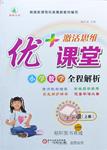题目内容
阅读下面短文,掌握其大意,然后从短文后所给各题的四个选项(A、B、C和D)中,选出可以填入空白处的最佳选项,并在答题卡上将该项涂黑。
People do not analyse every problem they meet. Sometimes they try to remember a solution from the last time they had a 36 problem. They often accept the opinion or ideas of other people. Other times they begin to act without 37 ; they try to find a solution by trial and error. However, when all of these methods 38 , the person with a problem has to start analyzing . There are six 39 in analysing a problem.
40 , the person must recognize that there is a problem. For example, Sam’s bicycle is broken, and he cannot ride it to class as he usually does. Sam must 41 that there is a problem with his bicycle.
Next the person must 42 the problem. Before Sam can repair his bicycle, he must know why it does not work. For example, he must 43 the parts that are wrong.
Now the person must look for 44 that will make the problem clearer and lead to 45 solutions. For example, suppose Sam 46 that his bike does not work because there is something wrong with the brakes. 47 , he can look in his bicycle repair book and read about brakes, talk to his friends at the bike shop, or look at his brakes carefully.
After 48 the problem, the person should have several suggestions for a possible solution. Take Sam as an example 49 , his suggestions might be: tighten or loosen the brakes; buy new brakes and change the old ones.
In the end, one 50 seems to be the solution to the problem. Sometimes the 51 idea comes quite 52 because the thinker suddenly sees something in a 53 way. Sam, for example, suddenly sees there is a piece of chewing gum stuck to a brake. He immediately hits on the solution to his problem: he must 54 the brake.
Finally the solution is 55 . Sam does it and finds his bicycle works perfectly. In short he has solved the problem.
A. serious B. usual ![]() similar D. common
similar D. common
A. practice B. thinking ![]() understanding D. help
understanding D. help
A. fail B. work ![]() change D. develop
change D. develop
A. ways B. conditions ![]() stages D. orders
stages D. orders
A. First B. Usually ![]() In general D. Most importantly
In general D. Most importantly
A. explain B. prove ![]() show D. see
show D. see
A. judge B. find ![]() describe D. face
describe D. face
A. check B. determine ![]() correct D. recover
correct D. recover
A. answers B. skills C. explanation D. information
A. possible B. exact C. real D. special
A. hopes B. argues C. decides D. suggests
A. In other wordsB. Once in a while C. First of all D. At this time
A. discussing B. settling down C. comparing with D. studying
A. secondly B. again C. also D. alone
A. suggestion B. conclusion C. decision D. discovery
A. next B. clear C. final D. new
A. unexpectedly B. late C. clearly D. often
A. simple B. different C. quick D. sudden
A. clean B. separate C. loosen D. remove
A. recorded B. completed C. tested D. accepted
【小题1】C
【小题2】B
【小题3】A
【小题4】C
【小题5】A
【小题6】D
【小题7】B
【小题8】B
【小题9】D
【小题10】A
【小题11】C
【小题12】D
【小题13】D
【小题14】B
【小题15】A
【小题16】C
【小题17】A
【小题18】B
【小题19】A
【小题20】C
解析:
略

 激活思维优加课堂系列答案
激活思维优加课堂系列答案 活力试卷系列答案
活力试卷系列答案